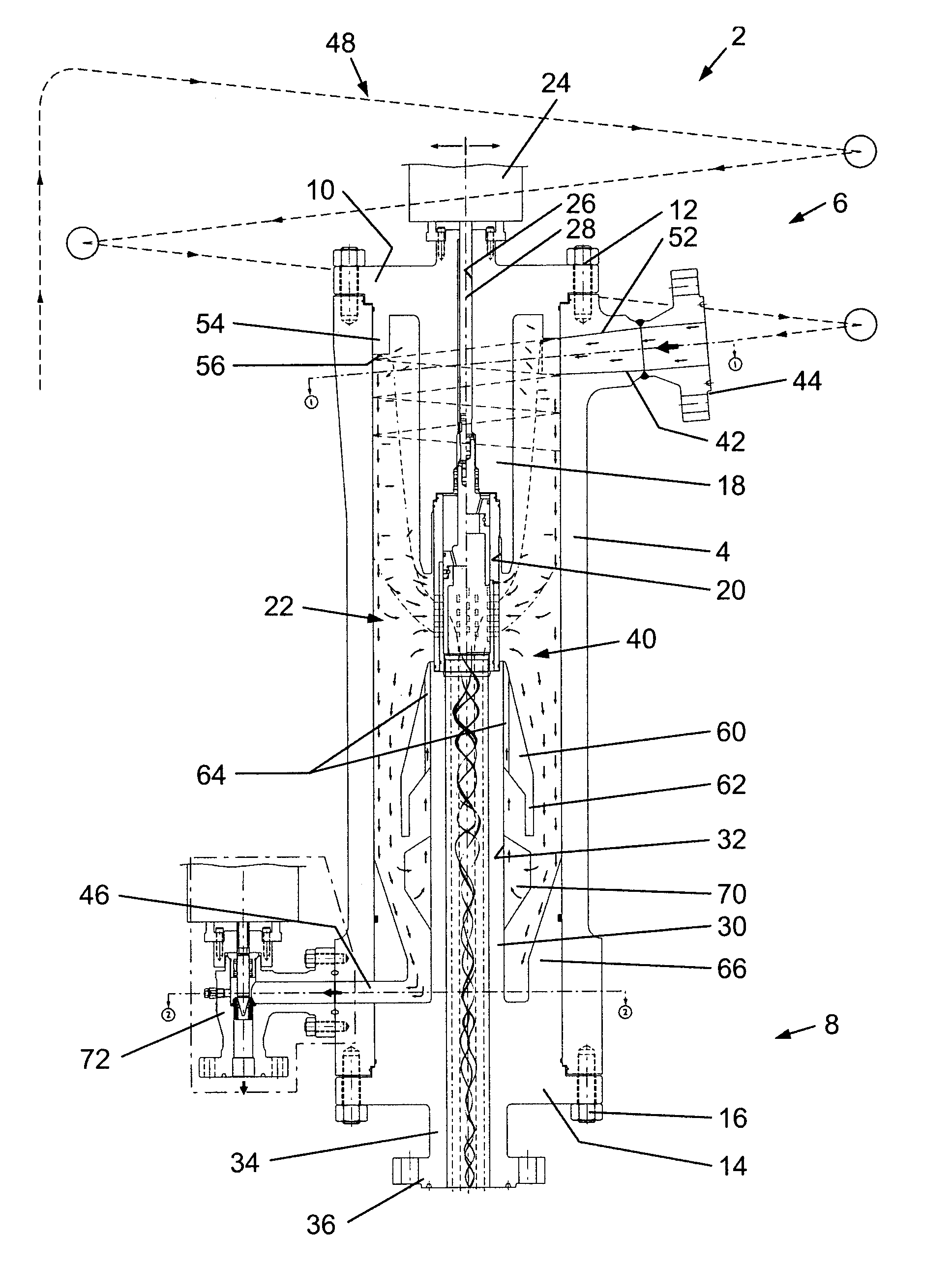Choke assembly
a choke assembly and choke technology, applied in the direction of separation process, instruments, borehole/well accessories, etc., can solve the problems of emulsifying oil and water phases, affecting the effect of choking, and affecting the choking effect of the choke assembly, so as to achieve the effect of effective choking mechanism, effective choking regime, and reduction of cross-sectional area
- Summary
- Abstract
- Description
- Claims
- Application Information
AI Technical Summary
Benefits of technology
Problems solved by technology
Method used
Image
Examples
Embodiment Construction
[0155]Referring to FIGS. 1 and 2a, there is shown a choke assembly, generally indicated as 2. The choke assembly comprises a generally cylindrical housing 4 having an inlet end, generally indicated as 6, and an outlet end, generally indicated as 8. A first cap 10 is mounted on the housing 4 by bolts 12 to enclose the inlet end 6. A second cap 14 is mounted on the housing 4 by bolts 16 to enclose the outlet end of the housing. The first and second caps 14, 16 are formed to provide several additional functions, as follows:
[0156]The first cap 10 has a central mandrel 18 extending therefrom coaxially within the housing 4, the distal end of the mandrel 18 being formed with a cylindrical recess 20 to provide a housing and support for the upper portion (as viewed in FIG. 1) of a choke element, generally indicated as 22. The choke element may be of any conventional design, with the arrangement shown in FIG. 1 being of a plug and cage type. The details of a preferred choke element are shown ...
PUM
| Property | Measurement | Unit |
|---|---|---|
| angle | aaaaa | aaaaa |
| angle | aaaaa | aaaaa |
| angle | aaaaa | aaaaa |
Abstract
Description
Claims
Application Information
 Login to View More
Login to View More - R&D
- Intellectual Property
- Life Sciences
- Materials
- Tech Scout
- Unparalleled Data Quality
- Higher Quality Content
- 60% Fewer Hallucinations
Browse by: Latest US Patents, China's latest patents, Technical Efficacy Thesaurus, Application Domain, Technology Topic, Popular Technical Reports.
© 2025 PatSnap. All rights reserved.Legal|Privacy policy|Modern Slavery Act Transparency Statement|Sitemap|About US| Contact US: help@patsnap.com



